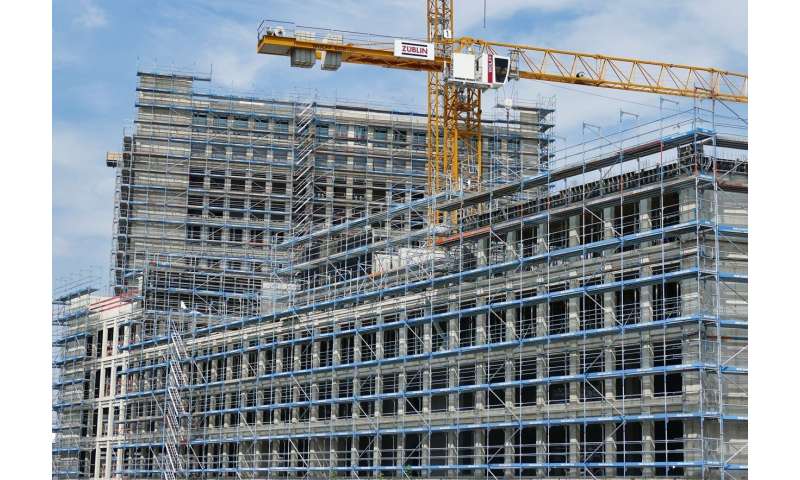Towards net zero: The neglected potential of the built environment

The buildings and construction industry accounts for more than a third of the world's greenhouse gas emissions (GHG), according to a 2022 UNEP report. A groundbreaking initiative, the Living Art of Building (LAB), spearheads a new era in construction to achieve climate neutrality.
The German Federal Government will support the development of a large research center on building and construction for a sustainable future with a budget of 68.6 million euros over five years. Furthermore, the districts of Bautzen and Görlitz in the Free State of Saxony agreed to invest 450 million from the structural transformation funds into the research center over a period of 15 years.
Further participating federal states are Brandenburg, Thuringia, and North Rhine-Westphalia. This visionary project represents a pivotal step towards reshaping the future of construction practices across Europe and the world.
Saxon State Minister for Regional Development, Thomas Schmidt said, "The Living Art of Building will have a significant impact on the future of the construction industry in Europe. It will help to find answers to current challenges such as energy and resource efficiency. The region's economy will benefit directly from its results."
Projected to create a record 40,000 jobs in the regions, LAB envisions a fundamental shift from linear to circular practices in construction. The 2023 position paper jointly issued by the German Environment Agency (UBA) and the Commission for Sustainable Building (KNBau) calls for the urgent need to significantly prioritize the existing building stock for a transformation that advances both social and ecological dimensions effectively.
President of UBA, Dirk Messner: "Urban infrastructures will grow by a factor of two by 2050. Buildings are driving 30–40% of global GHG, as well as 40% of global resource and waste flows. We have to shift the urban revolution toward climate neutrality—immediately."
The large research center LAB embodies ten values: neutrality, circularity, sufficiency, humanity, conservation, creation, inspiration, biodiversity, flexibility, and resilience. These values shall also shape an architectural competition for a circular building, a "House from Waste" within LAB, with a strategic focus on tapping on a wealth of potential resources that have so far been largely downcycled or ended up in a landfill. The "House from Waste" aims to challenge this norm by showcasing the viability of waste materials as valuable resources for construction.
UNU-FLORES Director and Member of the LAB Board, Edeltraud Guenther said, "Achievements have been made to make resources recyclable. However, recyclability is not circularity but only the first step. True circularity encompasses keeping resources in the cycle forever. This includes further strategies as in the 9Rs of the European Union: Refuse, Rethink, Reduce, Reuse, Repair, Refurbish, Remanufacture, and Repurpose."
The architectural competition is an invitation to experts from different disciplines—from architects, natural scientists, resource managers, to sustainability and social scientists—and from across the globe, to join forces to shape the vision and future of sustainable construction as to be embodied in the "House from Waste."
Going beyond local relevance and implementation, the "House from Waste" shall house efforts studying the transferability of the concept across different geographical and climatic contexts, and particularly in the Global South, where the trend of urbanization is strongest.
Rector of the United Nations University and Under-Secretary-General of the United Nations, Tshilidzi Marwala said, "This innovative house stands as a catalyst for generating ideas on sustainable innovation. Utilizing discarded materials that would otherwise burden landfills, this architectural marvel shall embody the potential of recycling, upcycling, and repurposing materials."
"Our commitment to a circular economy is showcased in this transformative initiative. We announce an architectural competition aimed at further pushing the boundaries of sustainable design, inviting experts to partner with us."
In the spirit of co-creation and in conjunction with the thematic day on the Built Environment at the UN Climate Change Conference COP28 in the UAE, UNU-FLORES invites experts and fellow advocates to partner up and shape the project brief of the architectural competition and to become members of the jury.
LAB represents a transformative journey toward sustainable architecture, combining the true circular building with other innovative components to drive change within the construction industry and pave the way for a greener, more resilient future.
Provided by United Nations University